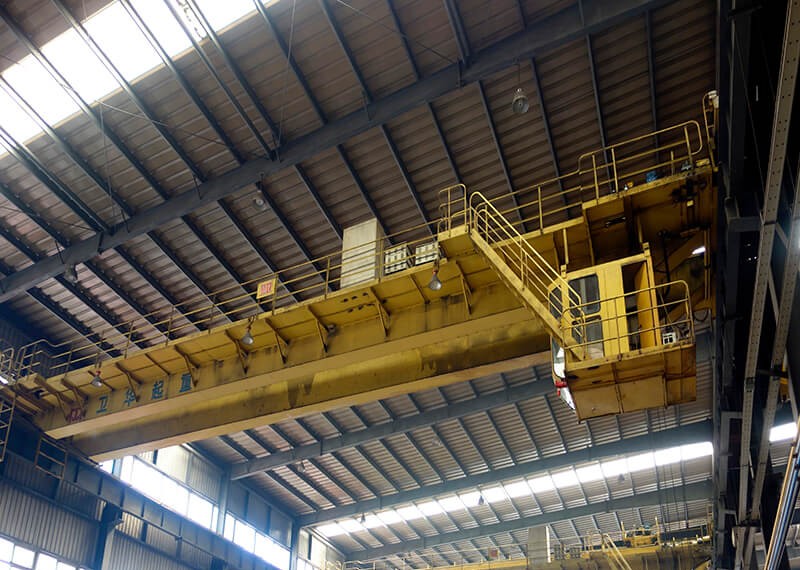
Causes of twisting and shaking of bridge-type single-girder cranes
After a period of use of the bridge single-girder crane, some users may find that the crane wobbles when it starts or stops. This situation will have a negative impact on the crane equipment. So what is the reason for the twisting of the bridge-type single-girder crane? What impact will it have on lifting cranes? Here is a brief introduction for everyone.
The reasons for the torsion of the bridge-type single-girder crane may be as follows:
1. There is a wear gap between the crane motor and the reducer. For example, the gear of the gear coupling and the gear of the reducer and its combination key are loose, and the gap between the connecting bolt and the hole of the drive shaft is worn out;
2. The crane wheel coupling key is loose;
3. A certain wheel of the crane does not rotate well. The reason for this situation is that the backing plate of the fixed wheel bearing seat is not correct, which makes the bearing not clamped flexibly. The wheel stops first when stopping;
4. The braking torques of the brakes on both sides of the crane that are driven separately are inconsistent. When stopping, one brake wheel has stopped and the other is still rotating.
5. For cranes that are driven separately, the parameters of the two motors are not matched, resulting in asynchrony.
6. The tightness of the two brakes is too different.
If the overhead single-girder crane appears torsion, it may cause the following effects on the equipment:
1. The crane main beam (load-bearing beam) is deformed. Because one side of the bridge is leading at the same time, one side is lagging, and at the moment of rebound, the leading side is lagging, and the lagging side is leading. This oscillates back and forth and twists, causing plastic deformation or cracking at the junction of the bridge and the beam.
2. The transmission and brake parts are worn. Due to the overall twisting of the crane, the wheels on both sides will rotate accordingly, so that the transmission and braking parts of the crane are subjected to repeated impacts, which accelerates the wear of the combined parts such as gears and keys. Severe twisting also has the risk of twisting the drive shaft.


